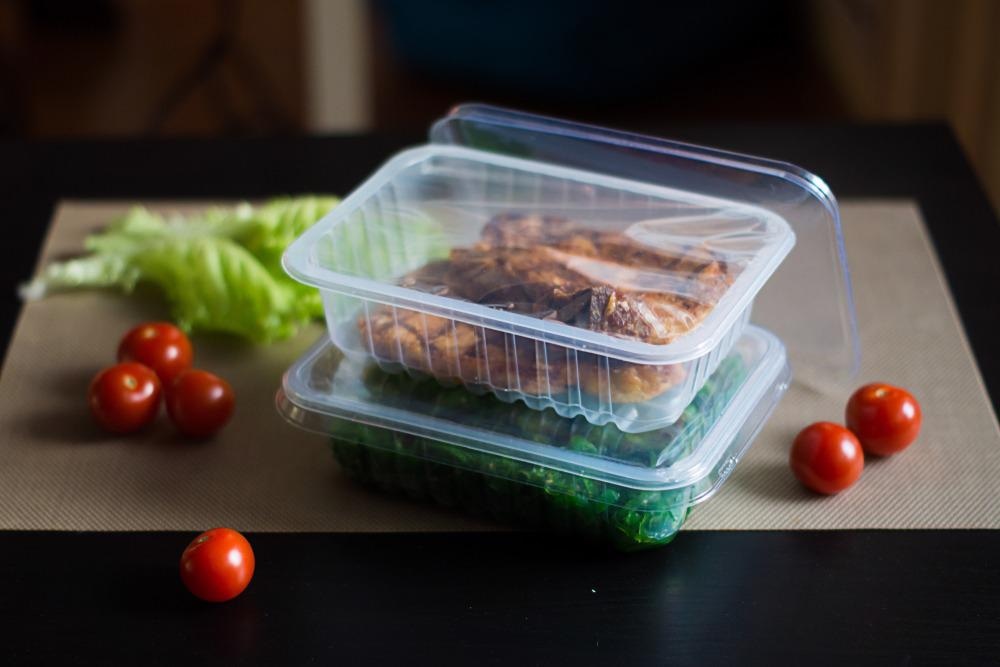Scientists from the University of Aveiro in Portugal have reported the development of new starch/chitosan biofilms for use in food packaging. The films have been functionalized with rGO, and alongside the superior mechanical properties, these bioplastics also have potent antioxidant and antimicrobial effects. The research is currently in the pre-proof stages in the journal Carbohydrate Polymers.

Study: Design of heat sealable starch-chitosan bioplastics reinforced with reduced graphene oxide for active food packaging Image Credit: Anna Shkolnaya/Shutterstock.com
Using Natural Biopolymers for Food Packaging
The food packaging industry is a major commercial sector. Traditionally, petroleum-based materials have been used to protect food, and whilst these materials possess adequate mechanical, physical, and chemical properties, they come at a huge environmental cost. Traditional polymers are non-biodegradable, suffer from low sustainability, and their manufacture is a key producer of greenhouse gases which lead to climate change.
In recent decades, research has focused on alternative materials for use in food packaging. Chief amongst these materials are natural biopolymers, which are vastly more sustainable and biodegradable than conventional petroleum-based polymeric materials. Manufacturing natural biopolymers is less carbon-intensive than conventional polymers, reducing the emission of harmful greenhouse gases and mitigating the effects of climate change.
Polysaccharides have been explored intensively for use as natural polymers for packaging. These materials, including chitosan, starch, cellulose, and alginate, are abundant and sustainable as they are highly renewable. Starch has shown promise as a food packaging material due to its beneficial properties such as good potential for biofilm formation, non-toxicity, and low cost. Starch can be obtained from several commercial crops such as potato, maize, corn, and rice.
Starch and Chitosan: Two Natural Polysaccharides that Can be Used for Food Packaging
A main advantage of starch for use as a commercial biopolymer is its thermoplastic properties in the presence of water and/or plasticizers such as glycerol. This allows it to be easily processed by commercial methods such as compression molding and extrusion. Processing conditions and final film properties are governed by the ratio of the material’s macromolecules, amylose, and amylopectin, which differ depending on the botanical source.
Another advantage of starch-based films is that they can be heat sealed. Thus, they can be used to create pouches and bags for food storage. However, starch films are limited by drawbacks such as hydrophilicity, poor mechanical properties, and fragility. Several strategies have been explored to improve starch films, such as blending them with other polymers and using reinforcing agents.
Biopolymers such as chitosan have been gaining research interest. Chitosan shares several properties with starch such as non-toxicity, biocompatibility, biodegradability and, most importantly, film-forming properties. Chitosan is obtained from crustacean exoskeletons and is the second most abundant polysaccharide after starch. Whilst this biopolymer has vast potential for food packaging, it is limited by its ability to be heat sealed and therefore must be blended with a thermoplastic polymer.
Starch/chitosan blends have been studied recently. Incorporating reinforcing agents into these blends gives them new functional properties. Nanomaterials derived from carbon, such as carbon nanotubes and rGO can improve the electrical conductivity of these biofilms, which is desirable in food sterilization techniques such as pulsed electric field methods. However, the effect of rGO on starch/chitosan films has not been widely studied.
The Paper
The new research has reported the development of a rGO functionalized starch/chitosan biopolymer film for use in food packaging. To the authors’ knowledge, this is the first material that combines the benefits of thermoplastic performance, high mechanical strength, sufficient electrical conductivity, and bioactive antioxidant properties.
Blends with different ratios of chitosan and starch with added rGO were analyzed in the research. Biofilms were prepared using solvent casting. The proportion of added rGO was 25 wt%.
The effect of blending the polymers and adding rGO on the thermoplastic properties of starch was evaluated. This was followed by an examination of the film’s sealing ability, another crucial consideration for use as food packaging. Mechanical property evolution, the film surface’s water wettability, electrical conductivity due to rGO modification, and the biofilm’s antioxidant properties were thoroughly investigated.
Experimental results demonstrated that an rGO modified 75% starch/25% chitosan blend possesses the highest potential for food packaging with all the properties needed. The mass fraction of chitosan was optimal for maintaining the biofilm’s seal strength. Incorporation of rGO improved the material’s mechanical performance, electrical conductivity, and water resistance whilst maintaining a similar seal strength to pure starch-based biofilms.
Chitosan and rGO both improved the antioxidant properties of the biofilms in both ethanol and water, providing protection for a wide range of food products against oxidation and microbial activity. In short, the research has developed a superior, sustainable, and functional alternative to conventional polymer-based food packaging which significantly improves food safety and shelf-life of food products.
Further Reading
Alves, Z et al. (2022) Design of heat sealable starch-chitosan bioplastics reinforced with reduced graphene oxide for active food packaging Carbohydrate Polymers 119517 [online, pre-proof] sciencedirect.com. Available at: https://www.sciencedirect.com/science/article/abs/pii/S0144861722004222.
Disclaimer: The views expressed here are those of the author expressed in their private capacity and do not necessarily represent the views of AZoM.com Limited T/A AZoNetwork the owner and operator of this website. This disclaimer forms part of the Terms and conditions of use of this website.